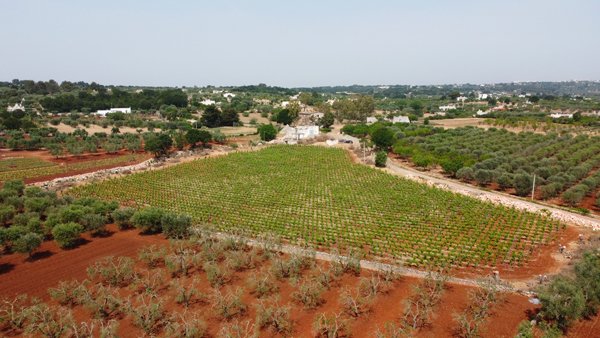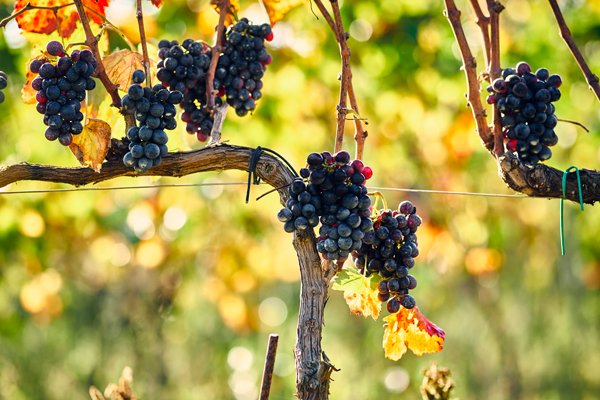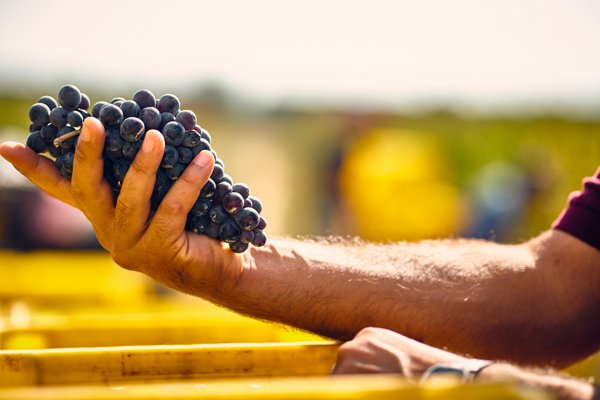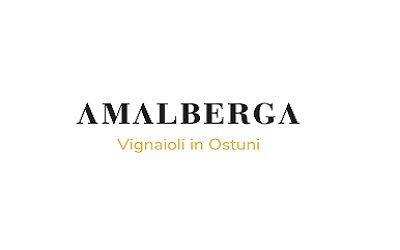Dario De Pascale, with friends and partners Roberto Fracassetti and Roberto Candia and together with winemakers Valentino Ciarla and Gloria Battista, launched the Amalberga project. The rediscovery of the Ostuni Doc, revitalizing Ostuni oenology and revaluing the territory.
Ostuni, known as “the white city” for the characteristic little houses of the old town painted in white lime, stands bright on the top of the hill and dominates the plain of centuries-old olive trees Which gently declines to the sea. Monumental olive trees are 3,000-year-old trees with twisted and bizarre trunks interspersed with vineyards, masserias, underground olive presses, trulli and dry stone walls. A striking landscape that can be discovered by walking along the paths, sheep-tracks and ancient rural roads.
This is why Ostuni is one of the most popular tourist destinations, but few people know that it boasts an ancient winemaking tradition. In January 1972, the Ostuni Doc was established., the specification covers the name Ostuni White based on unknown grape varieties from outside the area: Impigno (50 to 85 percent), Francavilla (15 to 50 percent), then Verdeca and Bianco di Alessano; the second appellation Ostuni Ottavianello you get from grapes of the same variety (minimum 85%), with the addition of Notar Domenico, Negroamaro, Susumaniello and Malvasia Nera.
Ostuni Doc

The Ostuni Doc was a struggling Doc, an unexpressed appellation despite its 50 years of age. At one time the circumscribed vineyard area between Ostuni and the rest of the Itria Valley numbered 4,000 hectares, the area was drastically reduced due to the Vineyard explantations funded in the 1980s.. Changing market trends, increasing relevance for indigenous grapes, and progressive awareness has enticed the young producers to focus on the personality and potential of forgotten typical grape varieties, micro-territories that have so much to tell, and the white wines of Puglia that are attracting considerable interest. A new way of thinking about enoic Apulia not necessarily connected to the triad composed of Primitivo, Negroamaro and Nero di Troia is emerging.
The dreams of young Dario De Pascale

Dario De Pascale, winemaker and owner of Osteria Monacelle in Ostuni, is one of the young dreamers, invested his own resources to buy casale Mindelli, which later became Amalberga winery and vineyards. Supporting him from the beginning was his wife Gloria Battista an oenologist by profession and Bergamo entrepreneur Roberto Fracassetti, an expert in the world of furniture textiles. Joining in the second line are winemaker Valentino Ciarla and entrepreneur Roberto Candia. The winery’s name was inspired by the Belgian nun Amalberga of Temse, known as a saint in Flanders and the patroness of farmers and sailors.
“We want to tell the soul of this very unique and distinctive place,” says Dario De Pascale. We started winemaking in 2016, but only came out of the closet when we felt we were ready and the construction of our winery was almost finished. The company has become our family; there are four pillars that support it: the people, the territory, the winery and the wines. The intent to shake up local wine production and promote the area by combining food and wine, hospitality, agricultural and wine production of excellence.”
Amalberga to the rediscovery of Ostuni Doc.

Amalberga is a modern winery, aiming for theenergy efficiency and allows a zero-loss water balance, through the collection in large cisterns of all rainwater and the reuse of water used in various activities. In addition, the entire production part was built underground, with the construction of two underground floors that place the structure up to 15 meters deep.

Constant subsurface temperatures allow winemaking and aging to take place under the best possible conditions, in a situation of maximization of energy savings And without the use of air conditioning. In the 11 hectares of the property and the remaining 12 hectares of related companies, Francavilla, Impigno, Minutolo, Bianco D’Alessano, Verdeca (saplings over 60 years old), and as red vines Primitivo (vines dating back to 1952), Ottavianello, Susumaniello, Aleatico and Negroamaro (with an average age of 55 years) are grown.
TO READ THE WINE DESCRIPTIONS, WITH SCORE AND AVERAGE SHELF PRICE, CLICK ON THE TABS BELOW.
[/vc_column_text][/vc_column][/vc_row]






